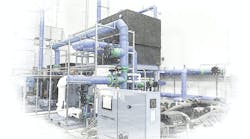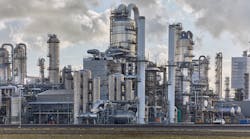For a considerable time now, the NFPA has wanted to combine the five main commodity-specific combustible dust standards, 61, 484, 652, 654, and 664 (Food, Metals, Fundamentals, Chemical, and Wood) into a single standard resembling NFPA 70, the National Electric Code. During the last few years, this process has been ongoing and is now at the end of the First Draft Phase and moving into the Second Draft phase. Each “phase” has been designed to allow the public (and many NFPA committee members) to have direct input into the configuration and content of the proposed standard.
This process has not been one smooth, non-controversial path and, even now, there is not unanimous agreement on this path. I am generally in favor of the effort, but with caveats. First, the integrity of every existing commodity-specific committee on combustible dusts should be retained with control over the content related to their chapters, definitions, annexes, etc. Second, the “fundamentals,” which constitute the first nine chapters of the standard, should be truly fundamental regarding combustible dusts and not variable and ill-defined. This is not an easy task, but I believe that NFPA is seeking to achieve this goal and honor these caveats.
As a side note, the document will likely be called a standard and not a code. The word “code” has too much negative baggage associated with it at this stage. However, it is possible that NFPA 660 will at some time in the future be accepted as a code for state and national use.
One of the significant changes in the terminology used within the standard is the substitution of “fire, flash-fire, and explosion” for deflagration and similar terms. This is to simplify the understanding of part of the standard where the intermingling of deflagration with explosions, fires and flash-fires created confusion.
There was also a misunderstanding regarding the use of the term “combustible dust” since many materials will “combust” which are not dusts. Therefore, the standard will cover combustible dusts and particulate solids (which may also result in a name change for the standard).
Chapters 1 through 9 are basically from NFPA 652 Fundamentals of Combustible Dust. They have been modified, especially chapters 8 and 9 (same in 652), to accommodate improvements and changes necessary for the configuration of the standard.
As previously stated, the importance of the commodity-specific standards (61, 484, 652, 654, and 664) remain and are reinforced by the statements in chapter one of the proposed 660 standard, which prioritize the relevant chapter (for example chapter 11, which is former NFPA 61). The purpose is to allow for the uniqueness of commodity-specific requirements (such as food, metals, etc.) versus what is truly a fundamental concern regarding all combustible dusts and particles whether they are food, metal, wood, chemical, etc. This is in chapter 1 on administrative items.
Chapter 2 is a lengthy list of pertinent references associated with all subjects covered in the standard with no real changes, other than updating.
Chapter 3, Definitions, is significantly expanded, as it includes all the pertinent definitions for the entire document. All the definitions are considered “fundamental” unless it is unique to a particular commodity specific chapter. Multiple definitions have been added to increase understanding of the requirements of the standard.
Chapter 4 provides the same basic information on the objectives and requirements of the entire standard. Other than clarifications, this section does not include major changes.
Chapter 5, Hazard Identification, is misnamed in my opinion. I believe it should be called “Identification of Material Hazards,” as the chapter concerns the determining of the explosivity and related characteristics associated with combustible dusts and particles. This is a very important chapter for any facility where combustible dusts are handled and/or processed. If you do not know the degree of hazards associated with your various combustible dusts and particles, how can you control and/or mitigate those hazards? This chapter contains only minor changes and clarifications, as it is basically universally applicable.
I strongly recommend that any testing or evaluation of the explosivity characteristics of materials:
- Include sample(s) that are truly representative of the hazardous materials being considered.
- Include testing for Kst (explosion severity measurement) and Pmax (basically the maximum pressure generated) which is necessary for designing protection for explosion hazards in equipment such as dust collectors.
- Include Minimum Explosive Concentration (MEC) and Minimum Ignition Energy (MIE — no inductance). These values are directly related to the risks involved in everyday handling and processing of combustible dusts and particles.
Chapter 6 on the performance design option is basically unchanged (with some clarifications). This chapter remains a viable option when no prescriptive solution is offered to a combustible dust or particle hazard.
Chapter 7, Dust Hazards Analysis (DHA), describes the method to analyze the combustible dust and particle hazards at your facility and provides a plan to eliminate and/or mitigate those hazards. If you have an existing facility that handles and processes combustible dusts and have not performed the required DHA, you must do so as soon as possible. This is no shallow, non-enforceable, requirement. NFPA 652 (with the DHA requirement) is now an enforceable requirement in the International Fire and Building Codes as well as strongly (in my informed experience) enforced by OSHA inspectors. Only NFPA 61 (food) has any variation to this requirement (limiting scope). Any new facility, process, or system (such as a new or significantly revised dust collection system, for example) must have a DHA to establish the necessary analysis of the combustible dust and particle hazards associated with the facility, process or system.
One of the more important considerations of Chapter 7 regarding DHAs is to be sure to provide the required expertise to produce a meaningful and comprehensive DHA. I have seen far too many worthless DHA documents containing babble and important-sounding words without truly addressing the hazards and possible solutions to effectively control and/or mitigate those hazards.
Chapter 8, Management Systems, is another section I would wish to rename to “Methods for Managing Hazards.” In general, this section covers methods that can be used to either eliminate or manage combustible dust hazards that do not involve physical changes. For example, this would include management of change (MOC), emergency planning, PPE, housekeeping, recordkeeping, training, etc.
This section should be the epitome of common sense in facilities handling and processing combustible dusts and particles. The vast majority of explosions are avoidable, often by utilizing proper housekeeping practices. An explosion cannot occur if there is insufficient fuel. Plus, most major property damage, personal injury and deaths occur due to secondary explosions, which are directly related to the unnecessary presence of combustible dusts in the facility due to improper housekeeping practices. Proper housekeeping (and dust collection) represents a basic, simple method to eliminate the fuel hazard that can lead to a catastrophe (such as Imperial Sugar, Didion, etc.). An employee with a broom and waste-pan is a powerful tool for explosion mitigation and control.
A facility that meets or exceeds the requirements of this chapter will go a long way toward eliminating and/or controlling the hazards associated with combustible dusts and particles. Additionally, these are the least costly of the prescriptive methods for handling combustible dust and particle explosion, flash-fire, and fire hazards.
Chapter 9, Hazard Management: Mitigation and Prevention, is the chapter with the most changes. This chapter basically covers the buildings and processes that are fundamental to facilities handling combustible dusts and particles. However, this is also an area where the inherent differences in the combustible dust exposures of food versus metals, versus wood, versus chemical, etc., come to the forefront.
Examples are plentiful. When considering mechanical feeding devices (such as screw feeders, belt feeders, vibrating feeders), bucket elevators, mixers/blenders, and conveyors, the chapter refers you to the appropriate commodity-specific chapter. This is due to the inherent differences in bulk handing systems for the various commodities. Wood products do not behave like metals, etc. The commodity-specific chapters should be consulted for these devices.
Dust collection, however, is universally a requirement for all the commodity-specific combustible dusts and particles. Chapter 9 contains very important design and use information that should be provided for all dust collection systems. However, it is vitally important to also consult with the same section areas of the commodity-specific chapters, as there are many unique requirements that must be considered. An example would be metal dusts, which represent unique problems when used with the wrong dust collection equipment. Such systems must include the requirements of the metals chapter.
Chapter 10 has been reserved for an unknown requirement, which often occurs.
Chapter 11 concerns the Agricultural and Food Processing commodity-specific industries. I am a participating member of all the commodity-specific committees, and this committee is most strongly against the NFPA 660 approach of combining the documents into one overall standard. It is also my opinion that many of the statements in the chapter are obstructive and do nothing to enhance the chapter’s viability.
However, there are some improvements in the DHA and dust collection portions of the chapter. Otherwise, for example the section on bucket elevators, the information provided is most useful and must be considered when handling combustible dusts and solids.
Chapter 12 concerns combustible metals. This chapter must be consulted when metals are involved. There are too many exposures that are not typical for other combustible dusts and particles that are applicable when handling metals. Very small quantities of combustible metal dusts can lead to severe explosion, flash-fire, and fire hazards, and many unique hazards must be considered with combustible metals. Importantly, this chapter contains significant information on the safe practices for additive manufacturing (3D printing).
Chapter 13 is titled Combustible Dusts and Particulate Solids Not Otherwise Specified, a laborious but properly descriptive title. This is the NFPA 654 chapter. Although originally conceived for chemicals, this chapter has grown to cover all “other” combustible dust and particles not covered by the other three combustible dust standards. This chapter is not significantly changed from the original 654 standard, though it does contain some information on additive manufacturing.
Chapter 14 addresses the 655 standard on sulfur. This is a spinoff from NFPA 654. Sulfur is a highly combustible dust and solid, so additional information for the handling of this dangerous material is needed and provided in this chapter.
Chapter 15 is titled Wood Processing and Woodworking Facilities. This ranges from sawmills to furniture makers, etc. Wood is a major fire and explosion hazard that has unique problems and equipment systems (such as planers, hogs, saws, etc.) that present specific combustible dust and particulate hazards.
The remainder covers Annexes A through Z (literally). This is often an ignored part of the original standards but is critical when considering explosion, flash-fire, and fire hazards. Annexes do not contain “required” information but do contain valuable additional information that more fully explains what is required. The annex information often answers questions generated by the previous requirements.
NFPA 660 is most likely to come into existence in late 2024, but perhaps later. There are other bridges to cross regarding the standard’s contents, configuration, and even ultimate acceptance, but the information provided here represents its current status.
Jack Osborn ([email protected]) is a senior project engineer at Airdusco Engineering and Design Services and a member of Processing’s editorial advisory board. He has more than 47 years of experience in dust collection systems, centralized vacuum cleaning systems, pneumatic conveying systems, and all types of bulk handling systems and is a participating member of all six NFPA combustible dust committees (61, 484, 652, 654, 664, and Correlating).
Airdusco EDS


